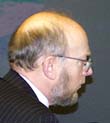RF Cascade Workbook for Excel
RF & Electronics Symbols for Visio
RF & Electronics Symbols for Office
RF & Electronics Stencils for Visio
RF Workbench
T-Shirts, Mugs, Cups, Ball Caps, Mouse Pads
Espresso Engineering Workbook™
Smith Chart™ for Excel
|
|
ampifier test setup procedure - RF Cafe Forums
|
| asaf
|
|
Post subject: ampifier test setup procedure
Posted: Mon Oct 22, 2007 7:41 am
|
|
| |
| Lieutenant |
 |
Joined: Thu Oct 11, 2007
7:58 pm
Posts: 4 |
|
Hi,
When testing an amplifier I was told
to connect dc, turn dc on and then connect testing
cables. Is this the right procedure?
Thanks.
|
|
| |
|
 |
|
Feng |
|
Post subject:
Posted: Tue Oct 23, 2007 3:22 pm
|
|
| |
| Captain |
 |
Joined: Sun Mar 19, 2006
5:25 pm
Posts: 23
Location: Burnaby
|
|
I don't think this procedure fits for all the amplifiers
such a high power one. You may check the specification
of your instrument to ensure it.
|
|
| |
|
 |
|
nubbage |
|
Post subject:
Posted: Wed Oct 24, 2007 7:33 am
|
|
| |
| General |
 |
Joined: Fri Feb 17, 2006
12:07 pm
Posts: 268
Location: London UK
|
|
Feng is right: many medium to high power amps have
a stability margin that is both source and load
sensitive: that is they become unstable at certain
load and source combinations of Reflection Coefficient
magnitude and phase. I think a dude called Linvill
first did the analysis of this for soldstate amps.
If the test cables are long and/or have extremely
good dielectric insulation, it is possible that
static charge can build up between the centre and
outer. It therefore good practice to short the test
cable between inner and outer before connecting
the cables to the amp. Having connected them without
risk of static damage, I would next turn the DC
power on having ensured the source and load have
a reasonably good match.
|
|
| |
|
 |
|
IR |
|
Post subject:
Posted: Sun Jan 27, 2008 3:36 am
|
|
| |
| Site Admin |
 |
Joined: Mon Jun 27, 2005
2:02 pm
Posts: 406
Location: Germany
|
|
Hello Asaf,
Since I also come from Israel
and have worked in several RF companies,
I know
the root of the fairy tale instruction you were
told:
It is the fear that there might be
an input power applied to the amplifier before power
supply is applied, namely when the amplifier is
connected as part of a cascade. When several amplifiers
are connected in cascade that is the right thing
to do but NOT when testing an amplifier as a stand
alone unit.
What the other posts mentioned
is 100% correct.
|
|
Posted 11/12/2012
|
|

Copyright: 1996 - 2024
Webmaster:
Kirt
Blattenberger,
BSEE - KB3UON
RF Cafe began life in 1996 as "RF Tools" in an AOL screen name web space totaling
2 MB. Its primary purpose was to provide me with ready access to commonly needed
formulas and reference material while performing my work as an RF system and circuit
design engineer. The World Wide Web (Internet) was largely an unknown entity at
the time and bandwidth was a scarce commodity. Dial-up modems blazed along at 14.4 kbps
while tying up your telephone line, and a nice lady's voice announced "You've Got
Mail" when a new message arrived...
|
All trademarks, copyrights, patents, and other rights of ownership to images
and text used on the RF Cafe website are hereby acknowledged.
|
|
All trademarks, copyrights, patents, and other rights of ownership to images
and text used on the RF Cafe website are hereby acknowledged.
My Hobby Website: AirplanesAndRockets.com
My Daughter's Website: EquineKingdom
|
|
|
|




